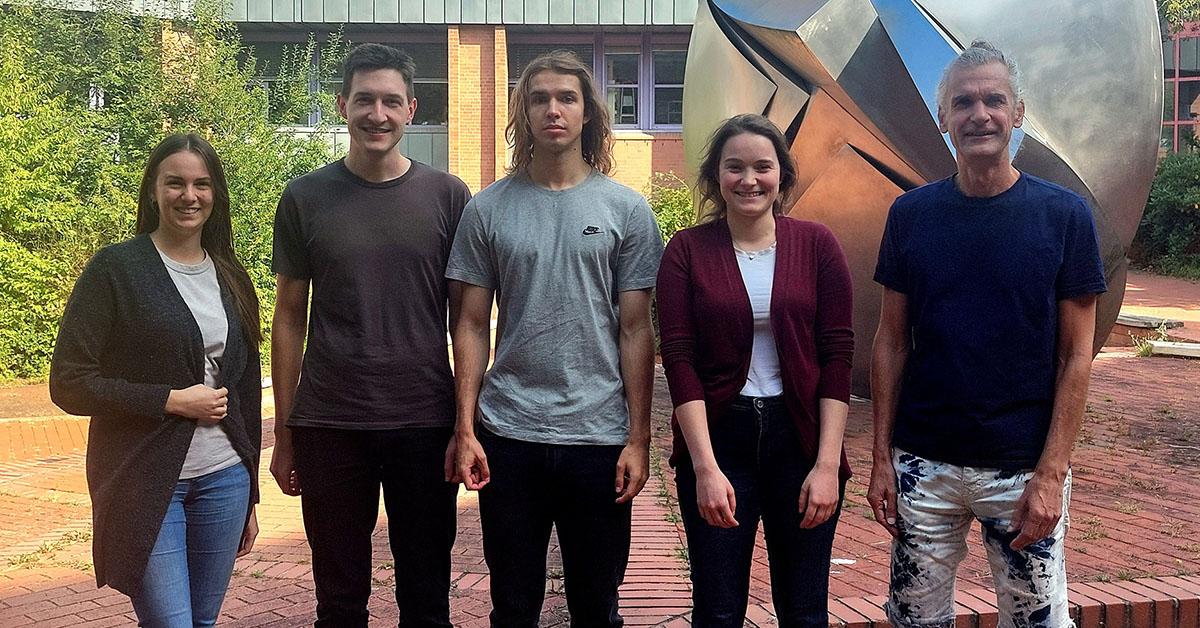Deeper Understanding of the Physics of Complex Liquids
University of Bayreuth, Press Release No. 128/2024 - 19 November 2024
Researchers at the University of Bayreuth have contributed to a more comprehensive understanding of soft matter, such as liquids and gels, through a fundamental extension of density functional theory and the discovery of a previously hidden gauge invariance. New "hyper-density functionals" enable the systematic study of fundamental physical mechanisms behind structure formation, while new equations provide insights into the underlying forces. The research was recognised with three "Editors' Suggestions."
What for?
A central modern paradigm in physics is the emergence of collective macroscopic behaviour from the intricate interactions of numerous individual microscopic components. A liquid, for example, can organise its molecules into a gel, where closely connected groups of particles create mechanical stability. Gaining a physical understanding of such structure formation is crucial for the development of industrial products like paints and coatings, as well as for understanding natural phenomena and biological processes.
One method for quantitatively describing complex systems, such as liquids, is density functional theory. It allows for efficient capture of interactions between many microscopic particles. However, density functional theory has its limitations, and not all quantities necessary and useful for describing complex systems can be directly calculated with it. Dr. Florian Sammüller and doctoral researcher Johanna Müller from the Chair of Theoretical Physics II, led by Prof. Dr. Matthias Schmidt at the University of Bayreuth, have made significant contributions to practical applications and deeper understanding.
By generalising the concept of density functionals with a combination of theory, numerical methods, and machine learning, it is now possible to consider arbitrary quantities, such as the number of interconnected particles in gels. So-called hyper-density functionals enable the systematic study of physical mechanisms leading to structure formation. Thanks to new machine learning methods, hyper-density functionals are realised as neural networks on computers. The information required to train these networks is highly accurate, as it is derived from simulation work where each individual particle in the system can be represented
The statistical description of all particles in a complex system is accompanied by a fundamental gauge invariance: this describes the property that physical laws remain unchanged when certain mathematical transformations are applied to the quantities describing the system. Unexpectedly, the researchers from Bayreuth discovered a completely analogous mathematical structure for particles, including a previously unknown Lie algebra identified by Johanna Müller, which describes an antisymmetric linkage. In this case, the average of any possible measurement remains unchanged, regardless of certain shifts of all particles in space, where the magnitude and direction may vary at each point of measurement.
Dr. Florian Sammüller, who established neural density functional theory in the research, explains: “It is remarkable how well theoretical insights can be combined with numerical methods. On the one hand, there is density and hyper-density functional theory, which deals with the existence and mathematical properties of abstract functional mappings. On the other hand, many-particle simulations offer a more intuitive understanding of a liquid under investigation, as the movement of individual particles can be directly observed – similar to experiments using a microscope. Machine learning methods, especially neural networks, are perfectly suited as a link between these two approaches, as they can extract and represent the underlying functional relationships from numerical simulation data.”
Original Sources:
Florian Sammüller, Silas Robitschko, Sophie Hermann, Matthias Schmidt
Hyperdensity functional theory of soft matter
Physical Review Letters 133, 098201 (2024) Editors' Suggestion
DOI: https://doi.org/10.1103/PhysRevLett.133.098201
Johanna Müller, Sophie Hermann, Florian Sammüller, Matthias Schmidt
Gauge invariance of equilibrium statistical mechanics
Physical Review Letters 133, 217101 (2024), Editors' Suggestion, Featured in Physics
DOI: https://doi.org/10.1103/PhysRevLett.133.217101
Florian Sammüller, Matthias Schmidt
Neural density functionals: Local learning and pair-correlation matching
Physical Review E 110, L032601 (2024) Editors' Suggestion
DOI: https://doi.org/10.1103/PhysRevE.110.L032601
Johanna Müller, Florian Sammüller, and Matthias Schmidt
Why gauge invariance applies to statistical mechanics
arXiv:2409.14166s
DOI: https://doi.org/10.48550/arXiv.2409.14166
Florian Sammüller and Matthias Schmidt
Why hyperdensity functionals describe any equilibrium observable
arXiv.2410.10534
DOI: https://doi.org/10.48550/arXiv.2410.10534

Prof. Dr. Matthias Schmidt
Theoretical Physics II
University of Bayreuth
Phone: +49 (0)921 / 55-3313
E-mail: matthias.schmidt@uni-bayreuth.de
Web: https://www.mschmidt.uni-bayreuth.de

Anja-Maria Meister
PR Spokesperson University of Bayreuth
Phone: +49 (0)921 / 55-5300
E-mail: anja.meister@uni-bayreuth.de


